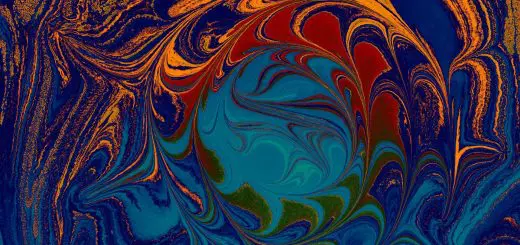Personality Characteristics and Color: Insights

Looking for more amazing products? Check out our online store and explore our collection here! Happy shopping!
Before diving in, please note: This post is for informational purposes only. If you’d like to know more about how we approach topics, feel free to check out our friendly Disclaimer Page.
Hey there, amazing readers! 
We’re committed to delivering quality posts, and your support (even just sticking around despite the ads) means everything to us. So, bear with us, and thanks for helping us keep the good vibes rolling. Now, on to the fun stuff!
TRANSLATE BUTTON AT THE END OF THE ARTICLE
A Quick Overview
Color plays a significant role in our daily lives, influencing our emotions, behaviors, and perceptions in various ways.
The relationship between personality characteristics and color has been a subject of interest for psychologists and researchers, as different colors are believed to reflect and shape individual traits.
Understanding color psychology can provide valuable insights into how colors can impact our mood, behavior, and overall well-being.
By exploring the connection between color and personality, we can gain a deeper understanding of ourselves and others, as well as harness the power of color to enhance self-expression and personal branding.
Exploring the Relationship Between Personality Characteristics and Color
The relationship between personality characteristics and color is a complex and multifaceted one.
While there is no one-size-fits-all approach to matching colors with specific personality traits, certain generalizations can be made based on color psychology.
For example, individuals who prefer warm colors like red, orange, and yellow are often seen as energetic, passionate, and extroverted, while those who gravitate towards cooler tones like blue, green, and purple may be perceived as calm, introspective, and creative.
Understanding Color Psychology and Its Impact on Personality
Color psychology is the study of how colors can affect human behavior and emotions.
Different colors have been shown to evoke specific feelings and moods, influencing our perception of the world around us.
For example, red is often associated with passion, energy, and excitement, while blue is linked to calmness, trust, and reliability.
By understanding the psychological effects of different colors, we can better tailor our environments, clothing choices, and branding strategies to reflect our personality and desired image.
The Influence of Color on Mood and Behavior
Colors have the power to elicit strong emotional responses and influence our behavior in subtle ways.
Research has shown that certain colors can evoke feelings of happiness, sadness, or anxiety, depending on individual preferences and associations.
For example, bright and vibrant colors like yellow and orange are often associated with joy and optimism, while darker shades such as black and gray can evoke feelings of sadness or seriousness.
By paying attention to how different colors make us feel, we can use color strategically to improve our mood and overall well-being.
How Different Colors Reflect and Shape Personality Traits
Each color is believed to have its own unique characteristics and symbolism, which can be linked to specific personality traits and characteristics.
For example, the color red is often associated with passion, courage, and strength, while green is linked to growth, balance, and harmony.
By incorporating these colors into our surroundings or wardrobe, we can reflect and reinforce these personality traits, influencing how we are perceived by others and how we perceive ourselves.
The Psychology Behind Color Preferences and Personality
Our color preferences are often influenced by a combination of cultural, personal, and psychological factors, reflecting our individual personality traits and characteristics.
For example, individuals who are drawn to bright and bold colors may be more extroverted and adventurous, while those who prefer softer and muted tones may be more introverted and sensitive.
By examining our color preferences and associations, we can gain valuable insights into our own personality and behaviors.
Colors and Their Associations with Various Personality Types
Certain colors are often associated with specific personality types or traits, based on common cultural beliefs and psychological associations.
For example, individuals who are drawn to the color blue may be perceived as calm, rational, and trustworthy, while those who prefer yellow may be seen as energetic, optimistic, and outgoing.
By understanding these color-personality associations, we can better tailor our communication styles, environments, and branding strategies to reflect our desired image and personality.
Investigating the Connection Between Color and Emotional Responses
Colors have the power to evoke strong emotional responses and trigger memories or associations that can influence our mood and behavior.
For example, the color red is often associated with love, passion, and excitement, triggering feelings of arousal and intensity.
On the other hand, the color blue is linked to peace, tranquility, and stability, promoting feelings of calmness and relaxation.
By being mindful of how different colors affect our emotional responses, we can use color strategically to enhance our well-being and relationships.
Color Symbolism and Its Significance in Personality Analysis
Color symbolism has been used for centuries to convey meanings, emotions, and personality traits across different cultures and societies.
For example, the color white is often associated with purity, innocence, and cleanliness, while black is linked to mystery, power, and sophistication.
By understanding the symbolic meanings of different colors, we can interpret how color choices in art, fashion, and design can reflect and communicate personality traits and characteristics.
Utilizing Color to Enhance Self-Expression and Individuality
Color can be a powerful tool for self-expression and individuality, allowing us to convey our personality, emotions, and values through our choices of clothing, decor, and branding.
By selecting colors that resonate with our personal style and preferences, we can create a unique and authentic image that reflects who we are and what we stand for.
Whether it’s through vibrant and bold hues or subtle and muted tones, color can be used to communicate our identity and make a statement about our individuality.
The Role of Color in Personal Branding and Image
Color plays a crucial role in personal branding and image building, as it can shape how we are perceived by others and influence our professional and social interactions.
For example, businesses often use specific colors in their logos and branding materials to convey their values, personality, and target audience.
Similarly, individuals can use color strategically in their clothing choices, grooming habits, and communication styles to create a consistent and memorable image that aligns with their personal brand.
Practical Applications of Color Psychology in Daily Life
Incorporating color psychology into our daily lives can have a positive impact on our mood, behavior, and well-being.
Here are some practical tips for harnessing the power of color to improve various aspects of our lives:
Choose colors that reflect your desired mood or energy level for a particular day or activity.
Use color to create a calming or invigorating environment in your home or workspace.
Experiment with different color combinations in your wardrobe to express different aspects of your personality.
Pay attention to how color affects your emotions and behaviors in various situations, and adjust accordingly.
Incorporate color into your self-care routines, such as through colorful foods or relaxing bath products.
Tips for Harnessing the Power of Color to Improve Well-Being and Relationships
Surround yourself with colors that evoke positive emotions and uplift your mood.
Use color to create a harmonious and balanced environment that promotes relaxation and peace of mind.
Communicate effectively with others by considering the psychological impact of color on emotions and perceptions.
Experiment with different color schemes in your personal and professional life to enhance creativity and productivity.
Embrace the diversity of color preferences and associations, recognizing that everyone’s relationship with color is unique and subjective.
Conclusion
The relationship between personality characteristics and color is a fascinating and intricate one, with colors playing a significant role in shaping our emotions, behaviors, and perceptions.
By understanding color psychology and the impact of different colors on our mood and well-being, we can harness the power of color to enhance self-expression, personal branding, and relationships.
By incorporating the insights and tips provided in this article, individuals can leverage the psychology of color to improve their overall quality of life and create a more harmonious and authentic sense of self.

The Enlightenment Journey is a remarkable collection of writings authored by a distinguished group of experts in the fields of spirituality, new age, and esoteric knowledge.
This anthology features a diverse assembly of well-experienced authors who bring their profound insights and credible perspectives to the forefront.
Each contributor possesses a wealth of knowledge and wisdom, making them authorities in their respective domains.
Together, they offer readers a transformative journey into the realms of spiritual growth, self-discovery, and esoteric enlightenment.
The Enlightenment Journey is a testament to the collective expertise of these luminaries, providing readers with a rich tapestry of ideas and information to illuminate their spiritual path.
Our Diverse Expertise
While our primary focus is on spirituality and esotericism, we are equally passionate about exploring a wide range of other topics and niches 

To ensure we provide the most accurate and valuable insights, we collaborate with trusted experts in their respective domains 
Our blog originally focused on spirituality and metaphysics, but we’ve since expanded to cover a wide range of niches. Don’t worry—we continue to publish a lot of articles on spirituality! Frequently visit our blog to explore our diverse content and stay tuned for more insightful reads.
Hey there, amazing reader! 
Check out our store here and take a peek at some of our featured products below! Thanks for being awesome!













